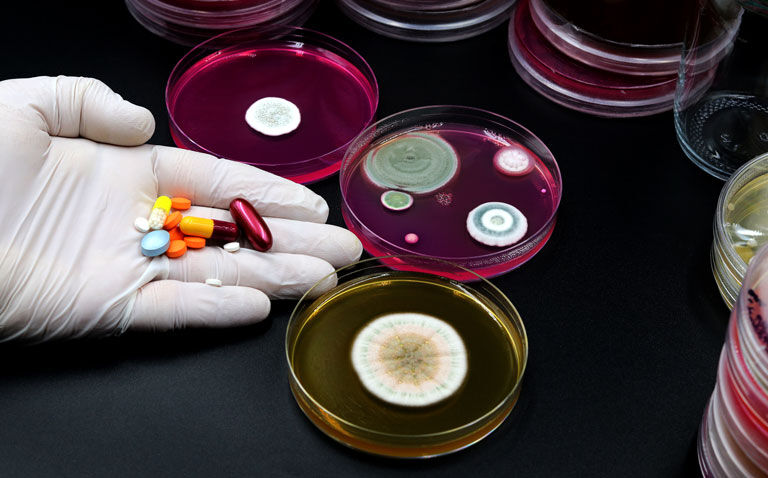Using a machine learning approach, researchers have identified a molecule that can potentially treat infections due to Acinetobacter baumannii – a common cause of a nosocomial infection in hospitals that is often multi-drug resistant.
Acinetobacter baumannii (A. baumannii) is an opportunistic, nosocomial pathogen and one of the six most important multi-drug-resistant microorganisms in hospitals worldwide. The organism has become particularly troublesome in hospitals due to its ability to survive for prolonged periods of time and an innate resistance to both desiccation and disinfectants. As a result, there is a growing and urgent need to develop novel antibiotics to overcome drug-resistant organisms.
Machine learning and antibiotic discovery
One novel approach to drug discovery is the use of machine learning algorithms. The value of this strategy was recently utilised to predict molecules with broad-spectrum antibacterial activity against Escherichia coli.
But could this approach also be used to develop narrow-spectrum antibiotics, targeting specific organisms, given how this strategy has at least two potential advantages? Firstly, the spread of resistance is less likely with narrow-spectrum antibiotics because of less selection pressures. Secondly, narrow-spectrum agents do not cause dysbiosis – that is disruption to the microbiome – during treatment.
In a recent study published in Nature Chemical Biology, US and Canadian researchers used machine learning to focus their attention on identifying antibiotics targeting A. baumannii. The team screened approximately 7,500 molecules, looking at the ability of these agents to inhibit the growth of the organism in vitro. The search identified a set of 480 active molecules – those able to inhibit growth of A. baumannii. Further filtering using the algorithm reduced this to 240 molecules that were structurally different to existing antibiotics.
Abaucin shows promise
Ultimately, one compound, abaucin, demonstrated a very potent inhibitory action. Looking at its possible mechanism of action, the team identified how the drug appeared to interfere with lipoprotein trafficking, which is involved in development of an organism’s outer membrane and an intrinsic antibiotic resistance factor.
To examine the potential value of abaucin, researchers then tested the activity of the molecule against 41 known strains of A. baumannii. Surprisingly, they found it able to overcome all intrinsic and acquired resistance mechanisms in these 41 isolates. Furthermore, in a mouse model of an infection due to A. baumannii, abaucin proved to be an effective treatment.
The team also found that abaucin displayed minimal growth inhibitory activity against 51 human commensal species isolates, suggesting that it was unlikely to cause dysbiosis during treatment.
Looking forward, the researchers suggested once a novel antibacterial agent had been identified, machine learning models could be trained to examine the growth inhibition of a pathogen of interest, as well as the potential toxicity of the drug to mammalian cells.
In addition, with more high-quality datasets on which to train machine learning models, the researchers felt that this approach could become widely employed in future to more efficiently identify structurally and functionally effective new antibacterial agents.










